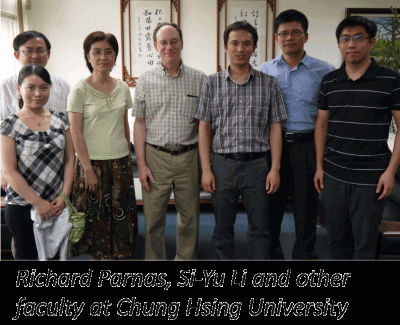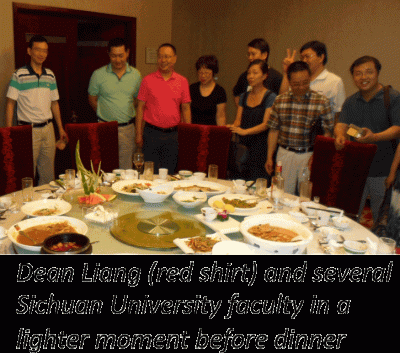The Chemical & Biomolecular Engineering Program would like to recognize their respective faculty members who have recently been granted new funding initiatives.
Daniel Gage (Molecular and Cell Biology) and Leslie Shor, USDA/National Institute of Food and Agriculture, Microfluidic Studies of Signaling Between Rhizosphere Bacteria and their Predators, 2/12-2/14, $150,000.
Yu Lei, University of Connecticut Center for Science & Technology Commercialization, Naked Eye-based Standoff Detection of Explosives Using Novel Signal-Amplifying Nanocomposite and Hand-held UV Light, 8/12-12/13, $7,500.
Anson Ma, NSF, Understanding the Flow Dynamics and Transport of Nanoparticles in Simulated Tumor Blood Flows for Improved Cancer Treatment, 9/12-8/14, $150,000.
Jeffrey McCutcheon, NSF, Collaborative Research: Modified Reverse Osmosis Membranes for Forward and Pressure Retarded Osmosis, 8/12-7/15, $234,405.
Jeffrey McCutcheon, Solvay Specialty Polymers, Polymeric Membranes for Emerging Separation Processes, 1/12-4/13, $102,679.
Jeffrey McCutcheon, Chevron USA, Produced Water Treatment using Forward Osmosis; Phase 1: Membrane Performance Testing, 4/12-1/13, $45,000.
Mu-Ping Nieh, James Cole (Molecular and Cell Biology) and Douglas Adamson (Chemistry), NSF, MRI: Acquisition of a State-of-the-Art Small Angle X-Ray Scattering (SAXS) Instrument for Research and Education, 9/12-8/15, $568,398.
Richard Parnas and Tim Dowding (School of Business), University of Connecticut Center for Science & Technology Commercialization, Biomass Waste to Construction Board, 5/12-1/13, $40,840.
Ioulia Valla and Prabhakar Singh, Precision Combustion Inc., 13X Zeolite as Potential Molecular Sieve for Gas Phase Impurities Removal: Emphasis on the Characterization of the Zeolite, 7/12-7/12, $9,995.
Ioulia Valla and George Bollas, NSF, Turning Tars into Energy: Zeolites with Hierarchical Pore Structure for the Catalytic Cracking of Tars, 8/12-7/14, $188,698.
Yong Wang, NSF, CREATIV: Programming Materials via Biomolecular Engineering, 9/12-8/15, $400,000.





 Hom Sharma, a Ph.D. candidate from the CMBE department, has received a highly competitive and prestigious Science to Achieve Results (STAR) Fellowship from The U.S. Environmental Protection Agency. This federal government award is limited to the country’s most outstanding graduate students in environmental science-related fields. The fellowship provides $126,000 over a three-year period to cover full tuition, a stipend, and research expenses. The fellowship has been awarded to the proposal titled “Computational and experimental investigation of catalyst deactivation to design sulfur resistant emissions oxidation catalysts” submitted to EPA. Hom is the first graduate student to receive the EPA STAR fellowship from UConn School of Engineering.
Hom Sharma, a Ph.D. candidate from the CMBE department, has received a highly competitive and prestigious Science to Achieve Results (STAR) Fellowship from The U.S. Environmental Protection Agency. This federal government award is limited to the country’s most outstanding graduate students in environmental science-related fields. The fellowship provides $126,000 over a three-year period to cover full tuition, a stipend, and research expenses. The fellowship has been awarded to the proposal titled “Computational and experimental investigation of catalyst deactivation to design sulfur resistant emissions oxidation catalysts” submitted to EPA. Hom is the first graduate student to receive the EPA STAR fellowship from UConn School of Engineering.
 A series of meetings with the governor’s Minister of Industry, the mayor of Jin Chuan city (where the complex is located), and the 10 CEOs of the companies involved in the complex illustrated the fast pace of development that is possible when public / private partnerships are executed with a cooperative attitude.
A series of meetings with the governor’s Minister of Industry, the mayor of Jin Chuan city (where the complex is located), and the 10 CEOs of the companies involved in the complex illustrated the fast pace of development that is possible when public / private partnerships are executed with a cooperative attitude.

